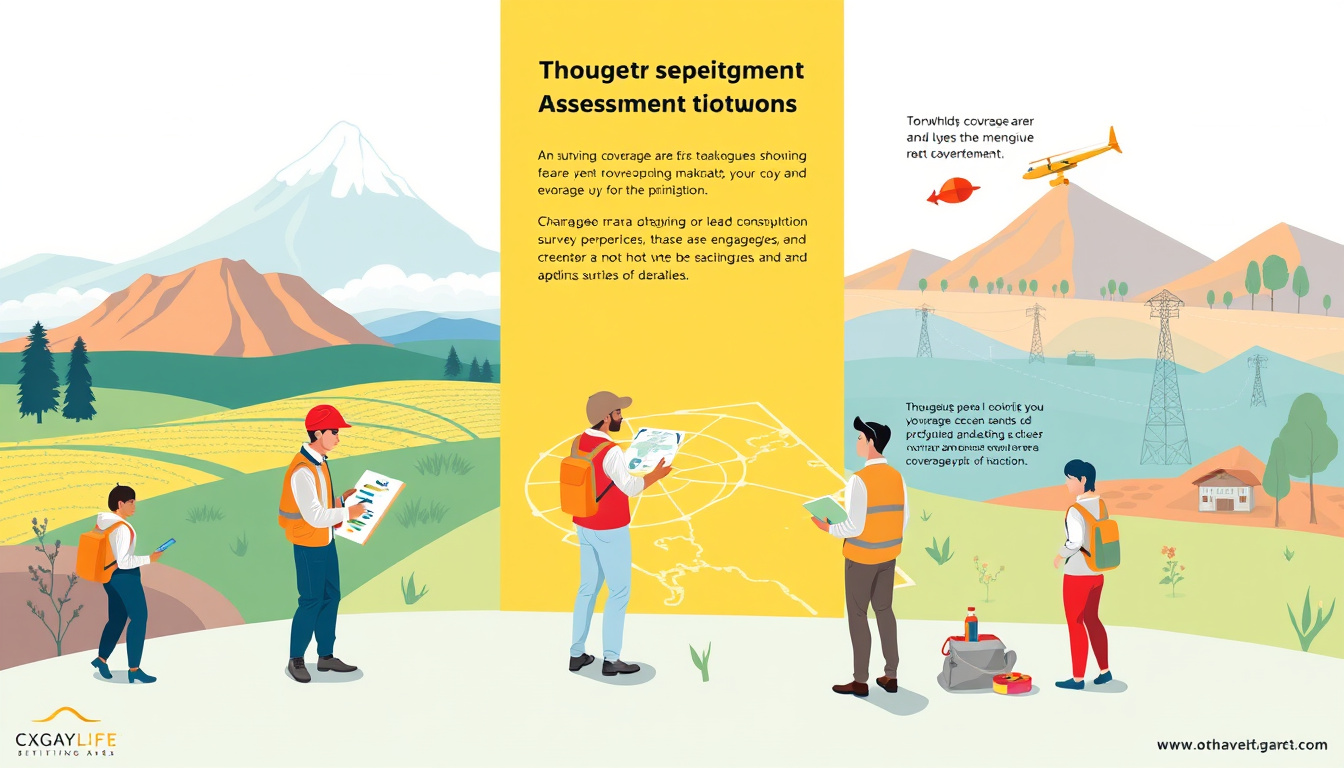Conducting a land survey is a critical step in property ownership, development, and boundary disputes. Whether you are buying, selling, or developing land, understanding the intricacies of the survey process, including its coverage area, is essential for protecting your investment and ensuring compliance with local regulations. This guide will explore how to assess and master your survey coverage area, ultimately leading to a successful outcome.
Understanding the Purpose and Types of Surveys
Before diving into the specifics of survey coverage, it’s essential to grasp the various types of land surveys and their respective purposes:
-
Boundary Survey: This defines the exact property boundaries and corners. It is crucial for buyers, developers, and those resolving boundary disputes.
-
Topographic Survey: This type maps the elevation and features of a landscape, making it useful for construction or environmental projects.
-
ALTA/NSPS Survey: Specifically designed for commercial real estate, this comprehensive survey provides detailed information necessary for title insurance, including property boundaries, easements, flood zones, and improvements. It ensures that a clear title is communicated and protects against future disputes.

Understanding the purpose of your survey helps establish the focus of your preparations and the extent of the coverage area required.
Preparing for a Successful Survey
1. Gather Relevant Documentation
Equipping your surveyor with accurate documentation can streamline the process. Key documents include:
- Deeds: Legal descriptions that outline ownership.
- Previous Surveys: Any prior survey records can provide context and clarify ownership issues.
- Title Documents: Information about easements, rights of way, and encroachments is vital for a comprehensive survey.
- Subdivision Plats: These may provide insight into the historical layout of the property.
2. Clear Boundaries
Preparing the physical site is just as crucial as the paperwork. Ensure that property boundaries are accessible. This can involve:
- Trimming Vegetation: Remove any overgrown plants that obstruct the surveyor’s view.
- Clearing Obstructions: Relocate vehicles and outdoor equipment to allow unhindered access to the property lines.
By making the property accessible, you help ensure that the surveyor can accurately locate and assess the boundaries.
3. Mark Known Property Corners
If you are aware of where your property corners are located, mark them clearly (using stakes or flags). While the surveyor will identify these points, having them marked can expedite the process and save time.
4. Identify Potential Hazards
Alerting the surveyor to any hazards on the property is essential for safety. Common hazards might include:
- Unstable Structures: Inform the surveyor of any buildings or structures in disrepair.
- Holes or Pits: Mark areas that could pose a tripping risk.
- Wildlife: Be aware of any local wildlife that may present a danger.
5. Know What to Expect
Understanding what your surveyor will need from you helps foster a smoother process. Be ready to provide clarity on your goals for the survey and any specific areas or features vital to your project.
Assessing Survey Coverage Area
Taking a thorough approach to your survey coverage area allows you to uncover potential issues that could affect property ownership or development. Ensure the following elements are comprehensively addressed in your survey:
A. Detailed Boundary Identification
The survey should clearly identify property lines, including any encroachments on adjacent properties. Recognizing these boundary details prevents disputes with neighbors and confirms legal property extents.
B. Utility Locations
Consideration for utility easements is crucial. Knowing where utilities run can prevent construction issues in the future and ensure better planning.
C. Access Considerations
Confirm the accessibility of your property. A survey that ensures you have legal access routes is vital, especially if the property is landlocked.
D. Compliance with Local Regulations
Be aware that different municipalities may have specific requirements regarding surveys. Ensure that your survey follows local guidelines to avoid future legal complications.
Conclusion
Mastering your survey coverage area involves thorough preparation, informed choices, and efficient communication with your surveyor. By understanding the purpose of various surveys, preparing the site adequately, and comprehensively addressing coverage aspects, you set the foundation for a successful property transaction or development. A well-executed survey is not only a matter of legal compliance but also a safeguard for your investment, opening doors for future opportunities while mitigating risks.



